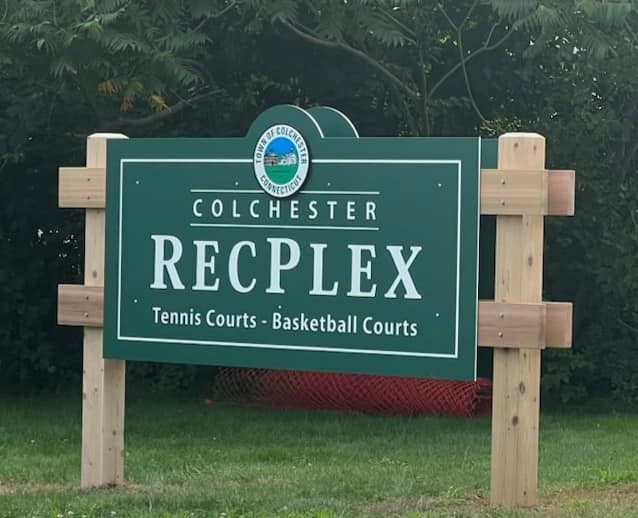Andreas Bisbikos of Colchester, Connecticut is the former First Selectman. Andreas understands the intricacies of navigating local government. In the following article, Andreas Bisbikos explores the profound impact of local government participation on parks and recreation programs, uncovering how it enhances the lives of residents and bolsters the cohesion of communities.
Parks and recreation programs are the beating heart of communities, offering a multitude of benefits that extend far beyond mere leisure activities. They serve as vital spaces where residents of all ages can come together to engage in physical exercise, socialize with one another, and immerse themselves in cultural experiences. From sprawling green spaces to state-of-the-art recreational facilities, these programs provide avenues for individuals to lead healthier and more fulfilling lives.
However, the seamless operation and longevity of these programs hinge upon the active involvement and support of local government entities. Andreas Bisbikos of Colchester, Connecticut highlights that municipal governments play a crucial role in funding, planning, and overseeing the development of parks and recreation initiatives. They allocate resources to maintain and improve existing facilities, as well as to create new recreational spaces that cater to the evolving needs of the community.
Moreover, local government entities collaborate with community stakeholders to ensure that parks and recreation programs are accessible and inclusive to all residents. They work to address disparities in access to recreational amenities, particularly in underserved neighborhoods, and strive to make these programs welcoming and accommodating to individuals of diverse backgrounds and abilities.
Andreas Bisbikos of Colchester, Connecticut Explains the Needed Financial Support
Local government bodies, such as city councils and municipal authorities, allocate funding for parks and recreation programs through their annual budgets. This financial support is crucial for the development and maintenance of parks, recreational facilities, and programming initiatives. It allows for the upkeep of green spaces, the construction of playgrounds and sports fields, and the hiring of qualified staff to organize and oversee recreational activities.
Infrastructure Development
Andreas Bisbikos of Colchester, Connecticut explains that local governments serve as the driving force behind the creation of parks and recreational amenities, meticulously identifying suitable locations based on the needs and preferences of their constituents. They conduct comprehensive assessments of the community’s recreational requirements, taking into account factors such as population density, demographics, and existing recreational facilities. This data-driven approach allows local authorities to make informed decisions regarding the allocation of resources and the prioritization of projects.
Collaboration is key in the planning and development of parks and recreational infrastructure, and local governments work closely with urban planners, landscape architects, and other stakeholders to bring their vision to life. Andreas Bisbikos has been instrumental in fostering partnerships with professionals in these fields, leveraging their expertise to design functional and aesthetically pleasing recreational spaces that meet the diverse needs of Colchester residents.
Zoning regulations and land use policies play a crucial role in ensuring the successful integration of parks into the urban landscape. Local governments enact policies that designate land for recreational purposes and establish guidelines for the development of parks. These regulations not only safeguard green spaces from encroachment but also promote accessibility and inclusivity, ensuring that parks are easily accessible to all members of the community, regardless of age, ability, or socioeconomic status.
Furthermore, local governments spearhead efforts to enhance the sustainability and resilience of parks and recreational infrastructure. With a keen eye on environmental conservation, Andreas Bisbikos has championed initiatives aimed at incorporating eco-friendly design elements into park development projects. From implementing green infrastructure solutions to promoting native landscaping practices, these efforts contribute to the preservation of natural resources and the mitigation of environmental impact.

Program Expansion and Diversity
With the support of local government funding and resources, parks and recreation programs can expand their offerings to cater to a diverse range of interests and demographics within the community. Andreas Bisbikos of Colchester, Connecticut says that this may include sports leagues for children and adults, fitness classes, arts and cultural workshops, nature education programs, and community events. By diversifying program offerings, local governments foster inclusivity and provide opportunities for individuals of all ages and backgrounds to engage in meaningful leisure activities.
Community Engagement and Empowerment
Local government involvement in parks and recreation programs facilitates community engagement and empowerment by encouraging residents to actively participate in decision-making processes. Andreas Bisbikos of Colchester, Connecticut explains that through public consultations, town hall meetings, and advisory committees, community members can provide feedback, voice their concerns, and contribute ideas for improving parks and recreational amenities. This collaborative approach strengthens civic pride and fosters a sense of ownership and stewardship over public spaces.
Environmental Stewardship
Green spaces also serve as vital components of urban ecosystems, providing valuable environmental benefits such as air purification, carbon sequestration, and habitat preservation. Andreas Bisbikos of Colchester, Connecticut emphasizes that through sustainable land management practices, local authorities protect natural resources, conserve biodiversity, and mitigate the impacts of climate change. Furthermore, parks and recreation programs offer opportunities for environmental education and conservation initiatives, raising awareness about the importance of ecological preservation among residents.
Economic Stimulus
These facilities contribute to the economic vitality of communities by attracting visitors, supporting local businesses, and enhancing property values. Well-maintained parks and recreational amenities increase the desirability of residential neighborhoods, attracting homebuyers and renters alike. Additionally, parks serve as venues for events and festivals, drawing tourists and generating revenue for nearby businesses such as restaurants, hotels, and retail establishments. Andreas Bisbikos of Colchester, Connecticut also notes that by investing in parks and recreation, local governments stimulate economic growth and create job opportunities within their communities.
Conclusion
Andreas Bisbikos of Colchester, Connecticut emphasizes that local government involvement is essential for the success and sustainability of parks and recreation programs, enriching the lives of residents and strengthening the social fabric of communities. Through financial support, infrastructure development, program expansion, community engagement, environmental stewardship, and economic stimulus, local authorities play a multifaceted role in enhancing the quality of life and promoting the well-being of individuals of all ages and backgrounds. By recognizing the importance of parks and recreation as essential public services, local governments demonstrate their commitment to creating vibrant, healthy, and inclusive communities for generations to come.

